Cover
Preface
Contents
Ch1 Computer Vision : Overview
1.1 Introduction
1.2 Recognition Methodology
1.2.1 Conditioning
1.2.2 Labeling
1.2.3 Grouping
1.2.4 Extracting
1.2.5 Matching
1.3 Outline of Book
Ch2 Binary Machine Vision : Thresholding and Segmentaion
2.1 Introduction
2.2 Thresholding
2.2.1 Minimizing Within-Group Variance
2.2.2 Minimizing Kullback information Distance
2.3 Connected Components Labeling
2.3.1 Connected Components Operators
2.3.2 Connected Components Algorithms
2.3.3 An Iterative Algorithm
2.3.4 The Classical Algorithm
2.3.5 A Space-Efficient Two-Pass Algorithm That Uses a Local Equivalence Table
2.3.6 An Efficient Run-Length Implementation of the Local Table Method
2.4 Signature Segmentation and Analysis
2.5 Summary
Exercises
Ch3 Binary Machine Vision : Region Analysis
3.1 Introduction
3.2 Region Properties
3.2.1 Extremal Points
3.2.2 Spatial Moments
3.2.3 Mixed Spatial Gray Level Moments
3.3 Signature Properties
3.3.1 Using Signature Analysis to Determine the Center and Orientation of a Rectangle
3.3.2 Using Signature Analysis to Determine the Center of a Circle
3.4 Summary
Exercises
Ch4 Statistical Pattern Recognition
4.1 Introduction
4.2 Bayes Decision Rules: Maximum Utility Model for Pattern Discrimination
4.2.1 Economic Gain Matrix
4.2.2 Decision Rule Construction
4.3 Prior Probability
4.4 Economic Gain Matrix and the Decision Rule
4.5 Maximin Decision Rule
4.6 Decision Rule Error: Misidentification/False Identification
4.7 Reserving Judgment
4.8 Nearest Neighbor Rule
4.9 A Binary Decision Tree Classifier
4.9.1 Decision Tree Construction
4.9.2 Decision Rules
4.10 Decision Rule Error Estimation
4.11 Neural Networks
4.12 Summary
Exercises
Ch5 Mathematical Morphology
5.1 Introduction
5.2 Binary Morphology
5.2.1 Binary Dilation
5.2.2 Binary Erotion
5.2.3 Hit-and-Miss Transform
5.2.4 Dilation and Erosion Summary
5.2.5 Opening and Closing
5.2.6 Morphological Shape Feature Extraction
5.2.7 Fast Dilations and Erosions
5.3 Connectivity
5.3.1 Separation Relation
5.3.2 Morphological Noise Cleaning and Connectivity
5.3.3 Openings, Holes, and Connectivity
5.3.4 Conditional Dilation
5.4 Generalized Openings and Closings
5.5 Gray Scale Morphology
5.5.1 Gray Scale Dilation and Erosion
5.5.2 Umbra Homomorphism Theorems
5.5.3 Gray Scale Opening and Closing
5.6 Openings, Closings, and Medians
5.7 Bounding Second Derivatives
5.8 Distance Transform and Recursive Morphology
5.9 Generalized Distance Transform
5.10 Medial Axis
5.10.1 Medial Axis and Morphological Skeleton
5.11 Morphological Sampling Theorem
5.11.1 Set-Bounding Relationships
5.11.2 Examples
5.11.3 Distance Relationships
5.12 Summary
Exercises
Ch6 Neighborhood Operators
6.1 Introduction
6.2 Symbolic Neighborhood Operators
6.2.1 Region-Growing Operator
6.2.2 Nearest Neighbor Sets and Influence Zones
6.2.3 Region-Shrinking Operator
6.2.4 Mark-Interior/Border-Pixel Operator
6.2.5 Connectivity Number Operator
Yokoi Connectivity Number
Rutovitz Connectivity Number
6.2.6 Connected Shrink Operator
6.2.7 Pair Relationship Operator
6.2.8 Thinning Operator
6.2.9 Distance Transformation Operator
6.2.10 Radius of Fusion
6.2.11 Number of Shortest Paths
6.3 Extremum-Related Neighborhood Operators
6.3.1 Non-Minima-Maxima Operator
6.3.2 Relative Extrema Operator
6.3.3 Reachability Operator
6.4 Linear Shift-Invariant Neighborhood Operator
6.4.1 Convolution and Correlation
6.4.2 Separability
Exercises
Ch7 Conditioning and Labeling
7.1 Introduction
7.2 Noise Cleaning
7.2.1 A Statistical Framework for Noise Removal
7.2.3 Outlier or Peak Noise
7.2.4 k-Nearest Neighbor
7.2.5 Gradient Inverse Weighted
7.2.6 Order Statistic Neighborhood Operators
7.2.7 A Decision Theoretic Approach to Estimating Mean
7.2.8 Hysteresis Smoothing
7.2.9 Sigma Filter
7.2.10 Selected-Neighborhood Averaging
7.2.11 Minimum Mean Square Noise Smoothing
7.2.12 Noise-Removal Techniques--Experiments
7.3 Sharpening
7.3.1 Extremum Sharpening
7.4 Edge Detection
7.4.1 Gradient Edge Detectors
7.4.2 Zero-Crossing Edge Detectors
7.4.3 Edge Operator Performance
7.5 Line Detection
Exercises
Bibliography
Ch8 The Facet Model
8.1 Introduction
8.2 Relative Maxima
8.3 Sloped Facet Parameter and Error Estimation
8.4 Facet-Based Peak Noise Removal
8.5 Iterated Facet Model
8.6 Gradient-Based Facet Edge Detection
8.7 Bayesian Approach to Gradient Edge Detection
8.8 Zero-Crossing Edge Detector
8.8.1 Discrete Orthogonal Polynomials
8.8.2 Two-Dimensional Discrete Orthogonal Polynomials
8.8.3 Equal-Weighted Least-Squares Fitting Problem
8.9 Integrated Directional Derivative Gradient Operator
8.9.1 Integrated Directional Derivative
8.9.2 Experimental Results
8.10 Corner Detection
8.10.1 Incremental Change along the Tangent Line
8.10.2 Incremental Change along the Contour Line
8.10.3 Instantaneous Rate of Change
8.10.4 Experimental Results
Facet Model - Based Corner Detectors
Comparison with Other Gray Tone Corner Detectors
8.11 Isotropic Derivative Magnitudes
8.12 Ridges and Ravlnes on Digital Images
8.12.1 Directional Derivatives
8.12.2 Ridge-Ravine Labeling
8.13 Topographic Primal Sketch
8.13.1 Introduction
Invariance Requirement
Background
8.13.2 Mathematical Classification of Topographic Structures
Peak
Pit
Ridge
Ravine
Saddle
Flat
Hillside
Summary of the Topographic Categories
Invariance of the Topographic Categories
Ridge and Ravine Continua
8.13.3 Topographic Classification Algorithm
Case One: No Zero Crossing
Case Two: One Zero Crossing
Case Three: Two Zero Crossings
Case Four: More Than Two Zero Crossings
8.13.4 Summary of Topographic Classification Scheme
Previous Work
Exercises
Bibliography
Ch9 Texture
9.1 Introduction
9.2 Gray Level Co-Occurrence
9.2.1 Generalized Gray Level Spatial Dependence Models for Texture
9.3 Strong Texture Measures and Generalized Co-Occurrence
9.3.1 Spatial Relationships
9.4 Autocorrelation Function and Texture
9.5 Digital Transform Methods and Texture
9.6 Textural Energy
9.7 Textural Edgeness
9.8 Vector Dispersion
9.9 Relative Extrema Density
9.10 Mathematical Morphology
9.11 Autoregression Models
9.12 Discrete Markov Random Fields
9.13 Random Mosaic Models
9.14 Structural Approaches to Texture Models
9.15 Texture Segmentation
9.16 Synthetic Texture Image Generation
9.17 Shape from Texture
9.18 Summary
Exercise
Bibliography
Ch10 Image Segmentation
10.1 Introduction
10.2 Measurement-Space-Guided Spatial Clustering
10.2.1 Thresholding
10.2.2 Multidimensional Measurement-Space Clustering
10.3 Region Growing
10.3.1 Single-Linkage Region Growing
10.3.2 Hybrid-Linkage Region Growing
10.3.3 Centroid-Linkage Region Growing
10.4 Hybrid-Linkage Combinations
10.5 Spatial Clustering
10.6 Split and Merge
10.7 Rule-Based Segmentation
10.8 Motion-Based Segmentaion
10.9 Summary
Exercises
Bibliography
Ch11 Arc Extraction and Segmentation
11.1 Introduction
11.2 Extracting Boundary Pixels from a Segmented Image
11.2.1 Concepts and Data Stuctures
11.2.2 Border-Tracking Algorithm
11.3 Linking One-Pixel-Wide Edges or Lines
11.4 Edge and Line Linking Using Directional Information
11.5 Segmentation of Arcs into Simple Segments
11.5.1 Iterative Endpoint Fit and Split
11.5.2 Tangential Angle Deflection
11.5.3 Uniform Bounded-Error Approximation
11.5.4 Breakpoint Optimization
11.5.5 Split and Merge
11.5.6 Isodata Segmentation
11.5.7 Curvature
11.6 Hough Transform
11.6.1 Hough Transform Technique
Finding Straight-Line Segments
Finding Circles
Extensions
Variations
11.6.2 A Bayesian Approach to the Hough Transform
11.7 Line Fitting
11.7.1 Variance of the Fitted Parameters
11.7.2 Principal-Axis Curve Fit
11.8 Region-of-Support Determination
11.9 Robust Line Fitting
11.10 Least-Squares Curve Fitting
11.10.1 Gradient Descent
11.10.2 Newton Method
11.10.3 Second-Order Approximation to Curve Fitting
11.10.4 Fitting to a Circle
11.10.5 Variance of the Fitted Parameters
11.10.6 Fitting to a Conic
11.10.7 Fitting to an Ellipse
11.10.8 Bayesian Fitting
11.10.9 Uniform Error Estimation
Exercises
Bibliography
Appendix A
Appendix B
Appendix C Experimental Protocol
Index
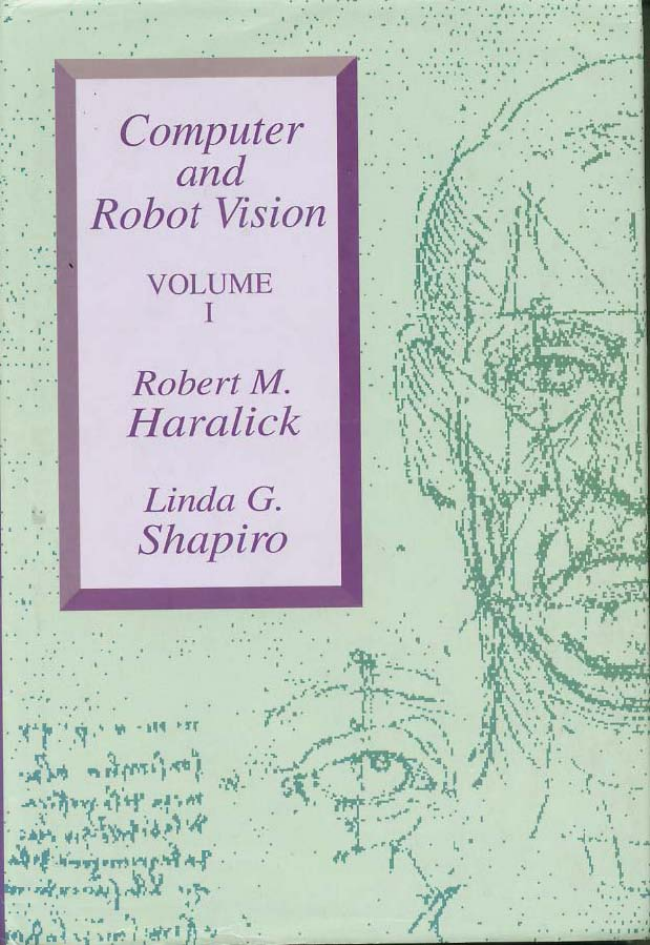
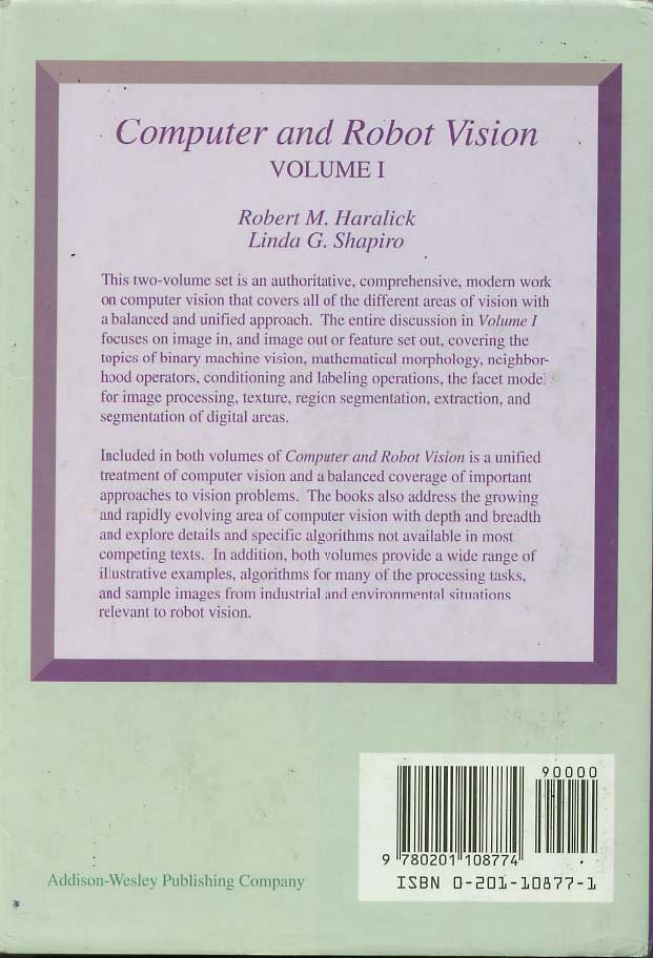
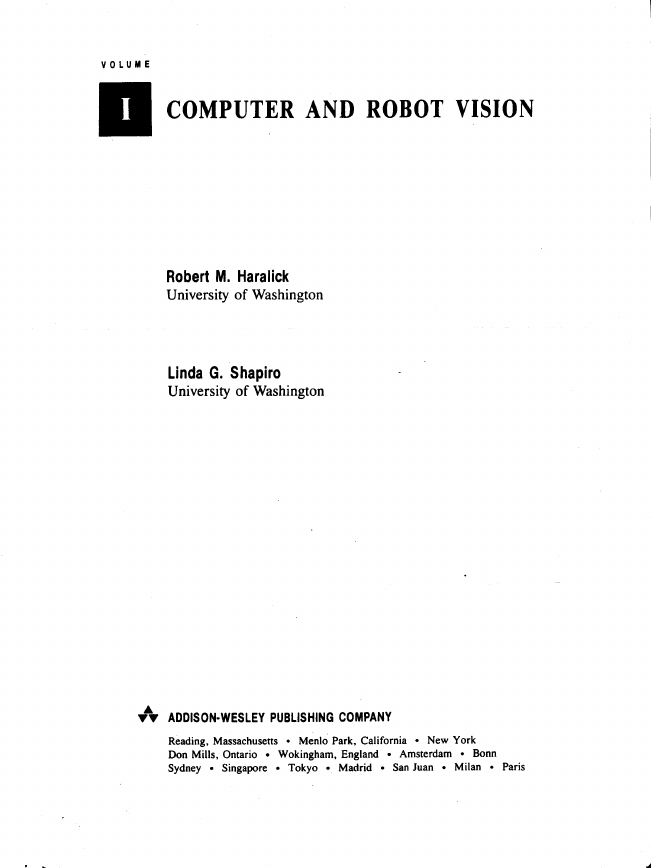
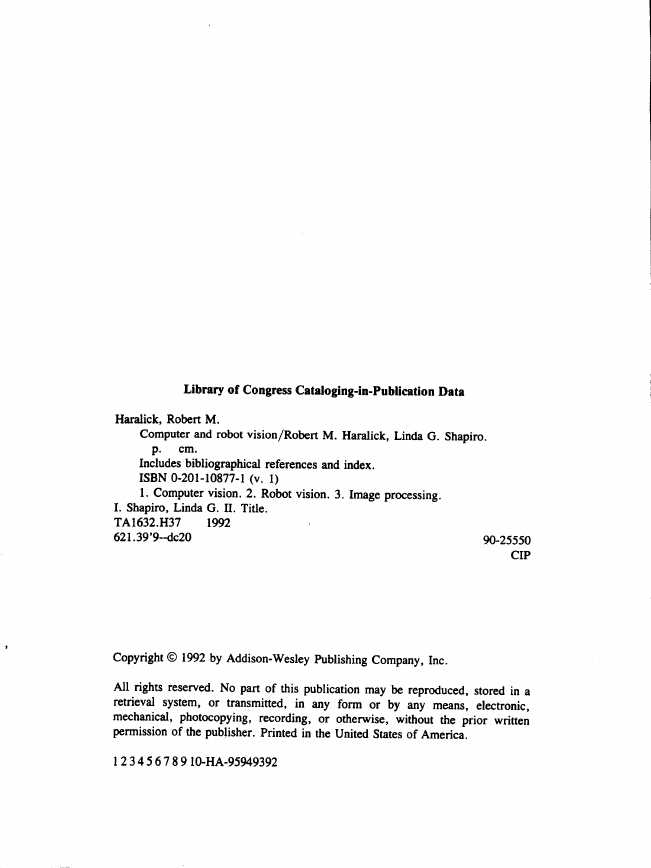

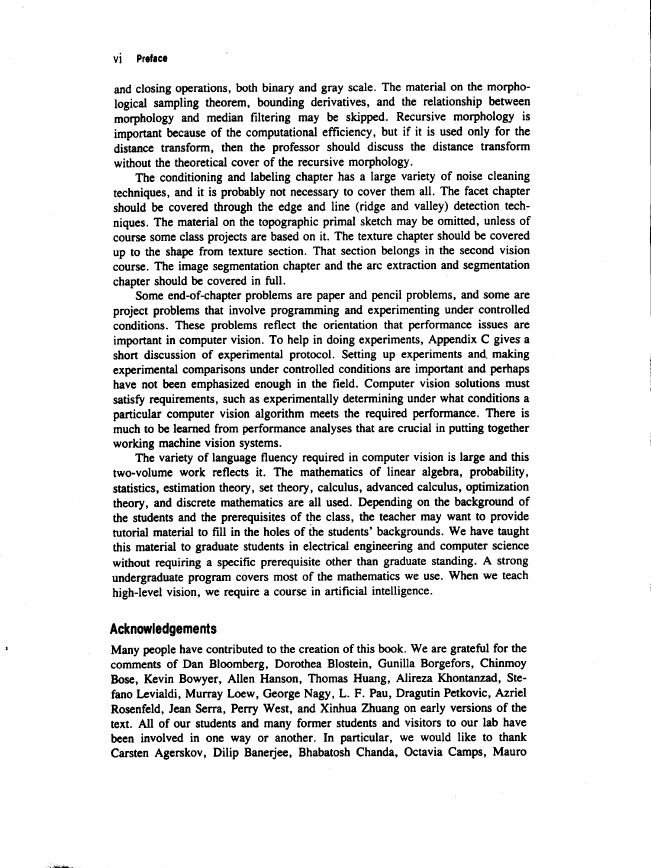

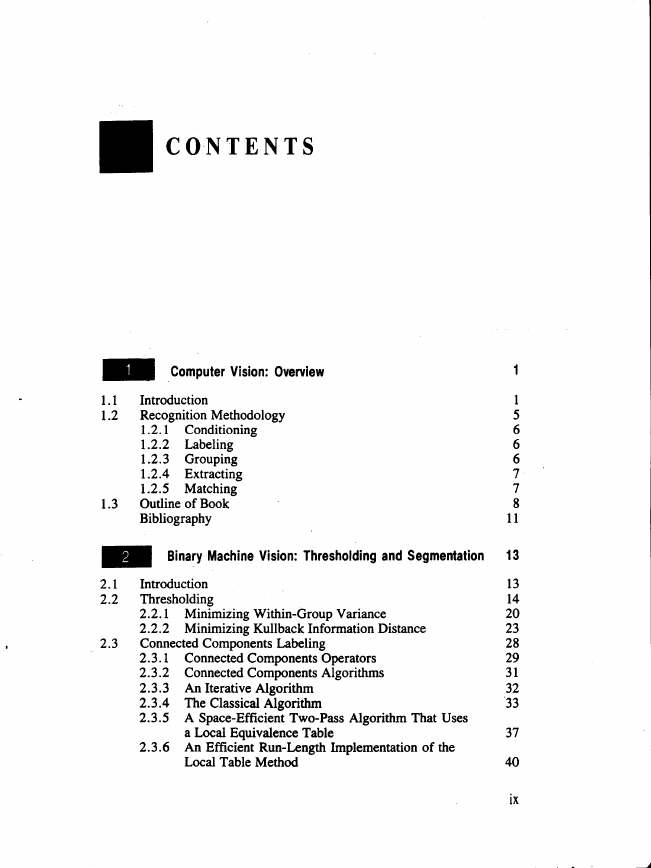








 2023年江西萍乡中考道德与法治真题及答案.doc
2023年江西萍乡中考道德与法治真题及答案.doc 2012年重庆南川中考生物真题及答案.doc
2012年重庆南川中考生物真题及答案.doc 2013年江西师范大学地理学综合及文艺理论基础考研真题.doc
2013年江西师范大学地理学综合及文艺理论基础考研真题.doc 2020年四川甘孜小升初语文真题及答案I卷.doc
2020年四川甘孜小升初语文真题及答案I卷.doc 2020年注册岩土工程师专业基础考试真题及答案.doc
2020年注册岩土工程师专业基础考试真题及答案.doc 2023-2024学年福建省厦门市九年级上学期数学月考试题及答案.doc
2023-2024学年福建省厦门市九年级上学期数学月考试题及答案.doc 2021-2022学年辽宁省沈阳市大东区九年级上学期语文期末试题及答案.doc
2021-2022学年辽宁省沈阳市大东区九年级上学期语文期末试题及答案.doc 2022-2023学年北京东城区初三第一学期物理期末试卷及答案.doc
2022-2023学年北京东城区初三第一学期物理期末试卷及答案.doc 2018上半年江西教师资格初中地理学科知识与教学能力真题及答案.doc
2018上半年江西教师资格初中地理学科知识与教学能力真题及答案.doc 2012年河北国家公务员申论考试真题及答案-省级.doc
2012年河北国家公务员申论考试真题及答案-省级.doc 2020-2021学年江苏省扬州市江都区邵樊片九年级上学期数学第一次质量检测试题及答案.doc
2020-2021学年江苏省扬州市江都区邵樊片九年级上学期数学第一次质量检测试题及答案.doc 2022下半年黑龙江教师资格证中学综合素质真题及答案.doc
2022下半年黑龙江教师资格证中学综合素质真题及答案.doc